By Jakub Paniaczyk
The early May Bank Holiday took Clidive to Portland. The group ranged from first-time drysuit to first-class divers and everything in between, while the forecast changed daily. Every Dive Manager’s dream …
At the beginning of May, during the extended weekend, our group embarked on an exciting adventure to the Isle of Portland in the hope of experiencing some of the area’s best diving. We called the trip ‘Portland Maypole’ in celebration of the traditional British May Day dance, a name that perfectly captured the spirit of our journey.
In the days leading up to the weekend, the weather forecast kept changing and Elaine gave us the option of pulling out of the trip, as she couldn’t guarantee the diving. But almost all of us decided to chance it and 15 divers headed off, with club boats Blue and Yellow loaded and ready.
Some of us were seasoned friends, while others were meeting for the first time. However, the shared anticipation of exploring Portland’s underwater delights quickly bridged any gaps, turning strangers into friends by the end of the trip.
Portland is renowned among diving enthusiasts for its rich maritime history and diverse marine life. The waters are home to numerous shipwrecks, each with its unique story and ecosystem. Some are remnants of the World War II D-Day landings and offer a poignant glimpse into history as well as creating fascinating dive sites that attract many marine species. The area also boasts impressive natural features such as underwater cliffs, caves and reefs, making it a top destination for divers of all levels.
I had a unique perspective on this trip, having joined the club quite recently and never having dived in UK waters from the club’s RIB, let alone in a drysuit. Fortunately, I wasn’t the only one!
We were excited about what to expect and which dive sites we would visit, as our dive-managing team prepared the plan just a day in advance due to the constantly changing weather conditions. We were fortunate to have a few Clidive all-stars in the team, so knowing we were in capable hands, we were eager to find out what the programme would entail.
The trip started chaotically for me. I was late, and my friends who were picking me up ended up waiting in the car longer than ideal for making a great first impression. Others faced minor obstacles, and our WhatsApp chat was lively with spare kit questions and boat updates. One person had no drysuit overshoes, another had no torch batteries, and Phil was doing last-minute trailer repairs.
But in the end, everything got sorted out, and we washed all the tension away in the local pub, The Cove Inn. Everyone was delighted to be there and the evening was filled with laughter and great camaraderie. Some of us even checked out the ‘backup’ pub – The Little Ship – when the first one closed, before heading to our well-deserved sleep in our bunks.
After a restful night’s sleep, we convened for a quintessential English breakfast. Our accommodation – The Bunker – was cosy and run by a lovely young family. We almost had the place to ourselves, with just one other diver and his partner occupying one of the rooms.
Following a short walk to the marina we began assembling our kit and were briefed about the weekend and the day’s diving, including being split into buddy pairs and different boats going to different sites.
My first dive was on the wreck of the Countess of Erne, a historic steamship that sank in 1935 near Portland Bill. Today, it’s a vibrant underwater ecosystem, home to spiny spider crabs, harbour crabs, and blackface blennies, among other marine life.
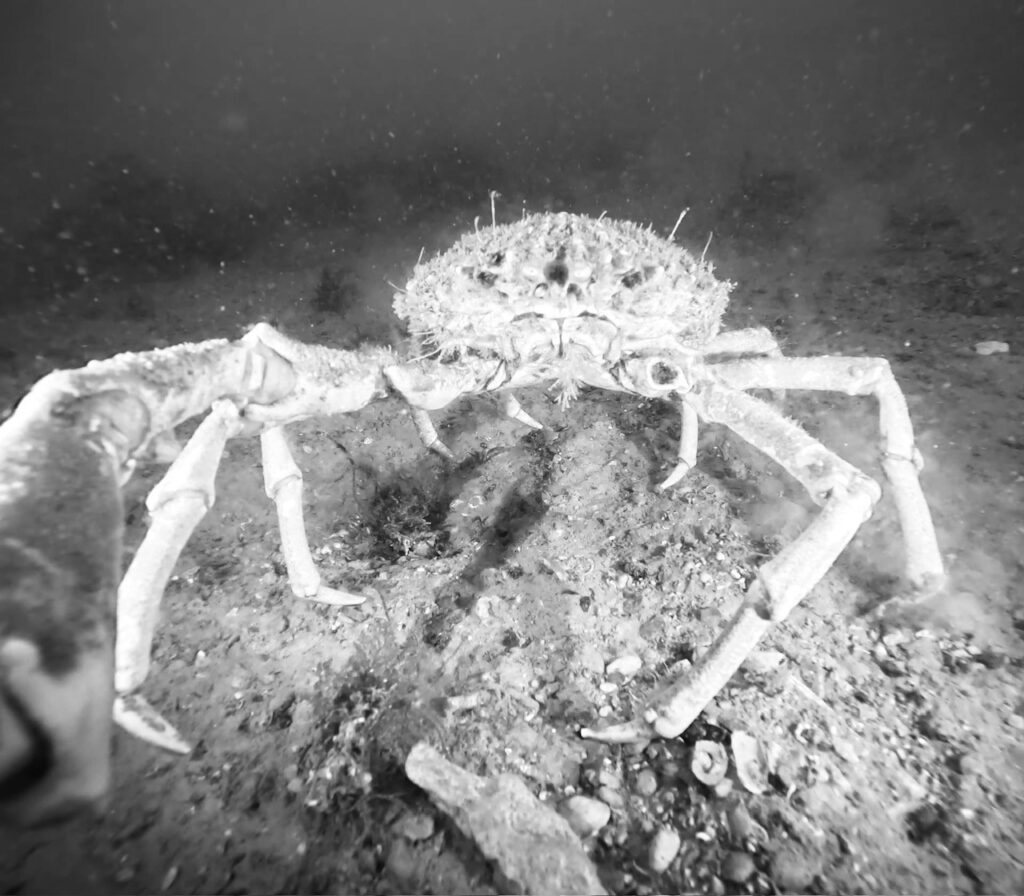
The following planned dive site was supposed to be the underwater sculpture park. However, locating the sculptures proved to be quite challenging. Despite following the lines, we couldn’t find anything except the seabed. We couldn’t help but wonder where the sculptures had disappeared to! Nonetheless, it was still an enjoyable dive and an excellent opportunity for practice.
We gathered at the Cove again for a delightful dinner, enjoying local specialities like fish pie. May weather in the UK can be unpredictable, but this evening was particularly enjoyable. We watched a beautiful sunset through the large pub windows, with the cliffs and landscape looking stunning and adding to the atmosphere. It was the perfect end to a first diving day.
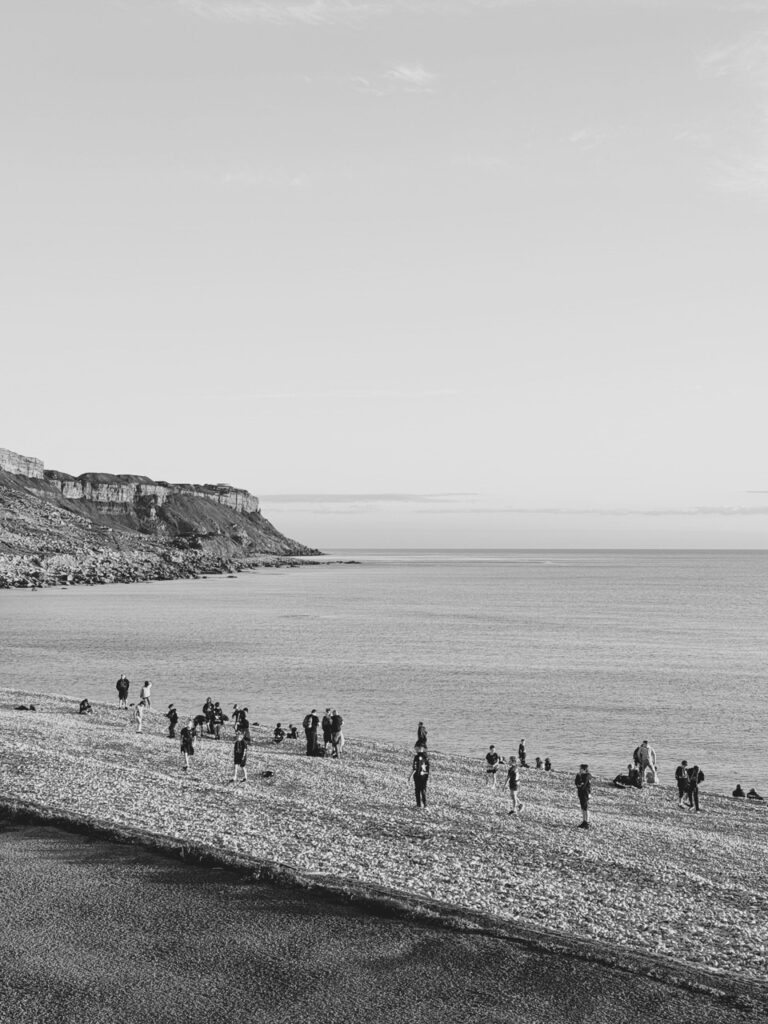
The next morning, our dive site was near Balaclava (or Bally) Bay, which has a long reef system that generally has a good range of sealife on it. This turned out to be an exhileratingly fast drift dive for the first group, offering a thrilling ride over the seabed. Having prepared ourselves for the same experience the second and third pairs went in together and ended up drifting very slowly in completely opposite directions! Good SMB practice, though.
After the Bay, we moved back to Portland Harbour to dive the Bombardon Unit and landing craft. The Bombardon Unit was an innovative piece of engineering from World War II, designed to act as a floating breakwater to protect the beaches during the D-Day landings. These large, pontoon-like structures helped to calm the waters, making it safer for troops and equipment to land. The unit’s remains are now a fascinating dive site, resembling huge, hollow steel blocks encrusted with sea life [and a LOT of silt! Ed].
Personally, I really enjoyed this dive, as it was one of my first UK wreck dives. Despite the poor visibility, the experience was still enriching.
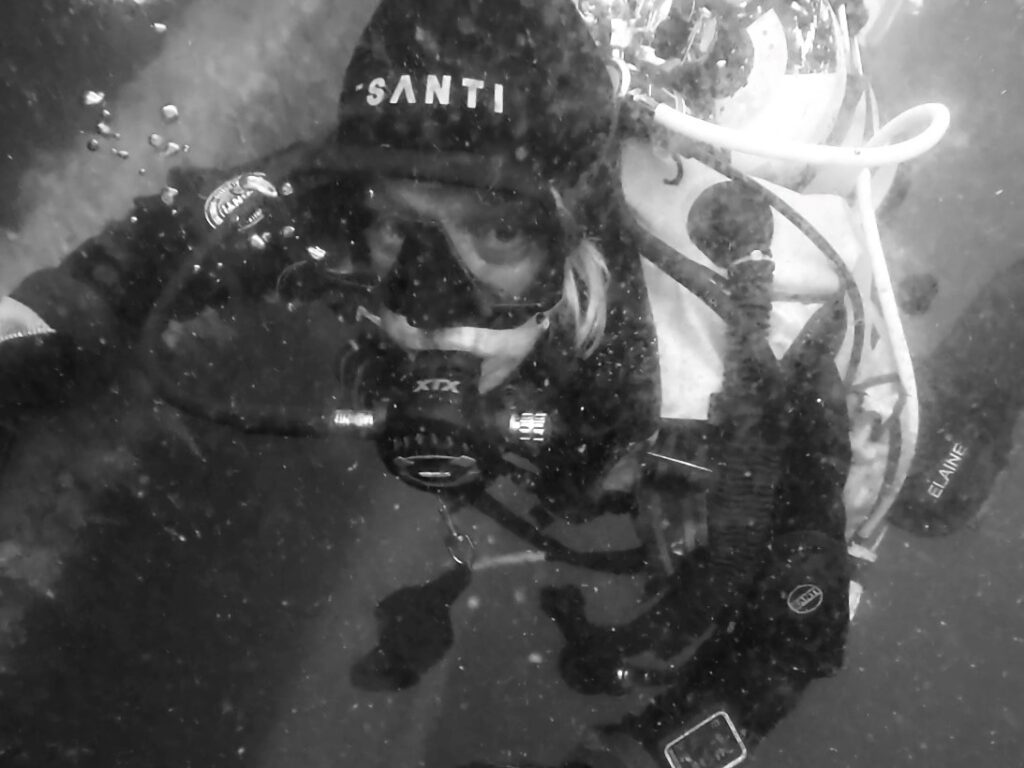
Our second dinner was a takeaway from a local Chinese restaurant eaten in the large, comfortable dining area of the Bunker. Our catering manager, Thomas, did an outstanding job organising the meal. We joked that he had done such a good job he had secured himself the permanent role of food organiser for all future trips to come.
On the final morning the wind finally calmed enough for us to head further afield and enjoy a drift dive on Lulworth Banks. This large stretch of sand and reef is consistently around 20m deep and famous for its scallops, so a popular one with seafood-loving divers!
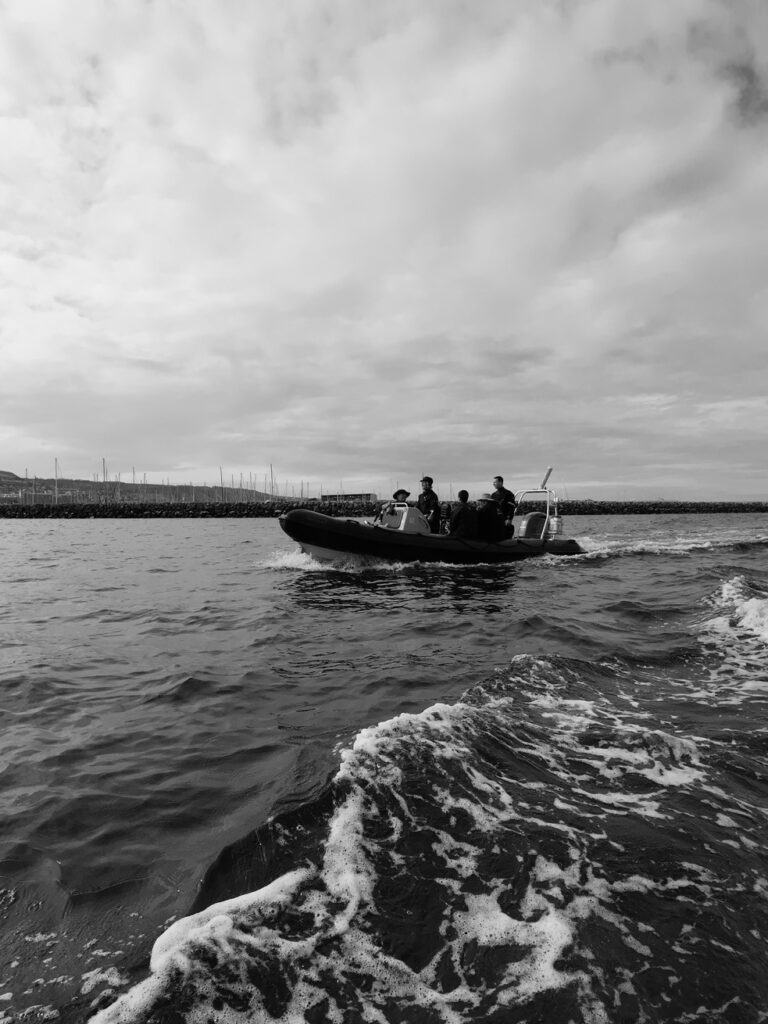
This dive was the only one over the weekend where both boats went to the same site. I was buddied with Nick H and we descended last, equipped with a mesh bag for collecting scallops. The experience felt like a strange dream, as we drifted along in the gloom caused by the heavy plankton bloom, our torches illuminating a small area of the seabed, grabbing scallops as we passed. It was surreal yet utterly delightful.
Ultimately, most of the scallops ended up on Phil’s plate, cooked with some garlic and butter, although Nick and Elaine took a good number and Gian Maria decided to have a go at preparing some using a YouTube video! A delicious reward for our underwater harvest.
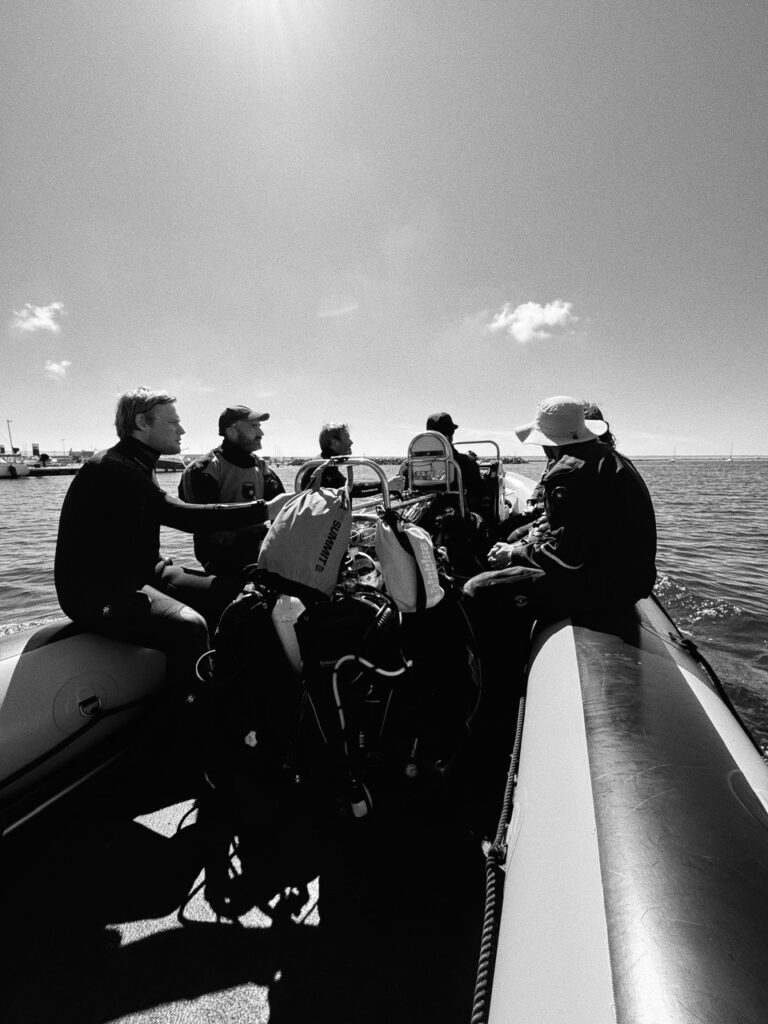
Unfortunately, when we returned to the marina, I needed to give my ears a break so I returned to the van and packed all my gear meticulously but forgot one crucial item—my shoes. I was faced with a tough decision: put my dry suit back on, with its neoprene boots or stay barefoot until the team returned. I put the suit back on and spent the afternoon in the marina bar, enjoying the views and reviewing my underwater photos. The bar’s patrons were accustomed to divers and didn’t bat an eyelid as I ordered wine in my half-open drysuit.
When the team returned, they shared that despite some visibility challenges, the last dive was still very enjoyable.
We then divided the tasks: refilling the cylinders for the club, taking care of the RIBs, and finally setting off back to London.
It was a refreshing break, topped off with some very enjoyable diving, making the trip truly memorable. Since Portland is frequently featured in Clidive’s dive programme, I am definitely planning to revisit the area.

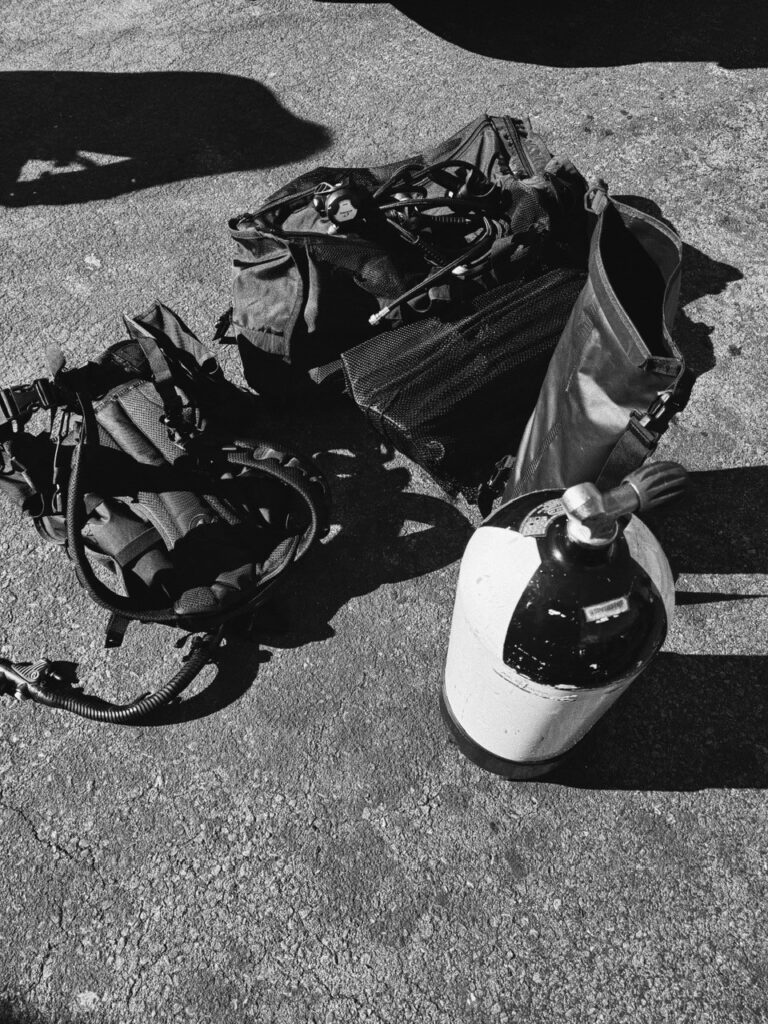
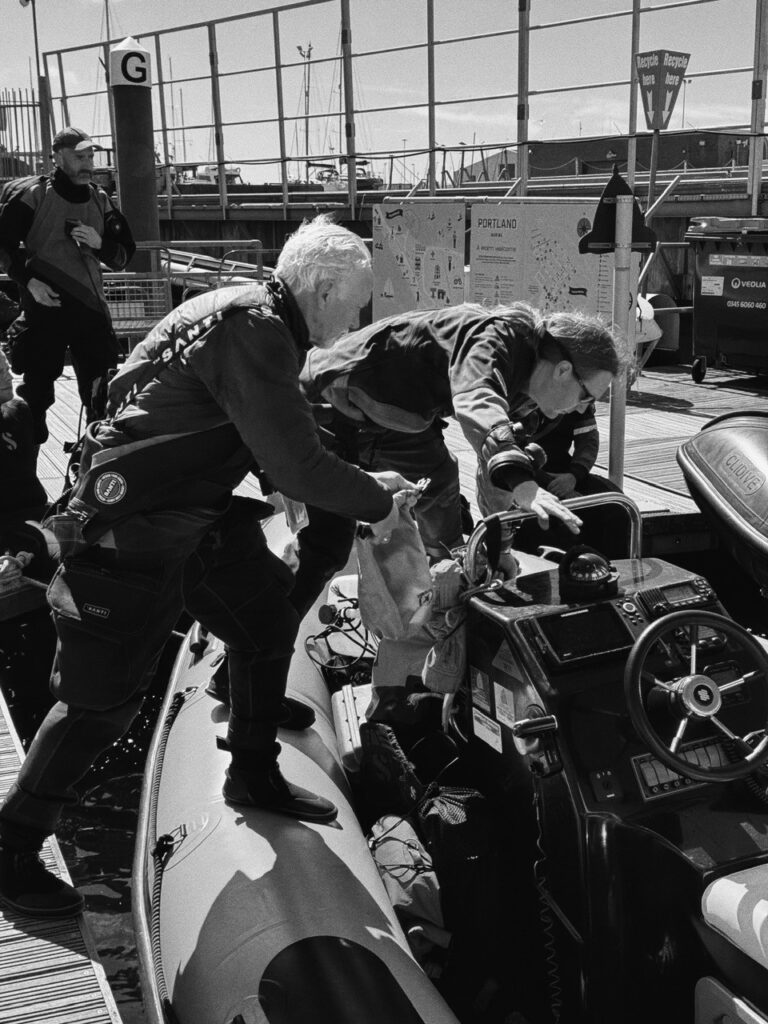
 We are an LGBTQIA+ friendly club
We are an LGBTQIA+ friendly club